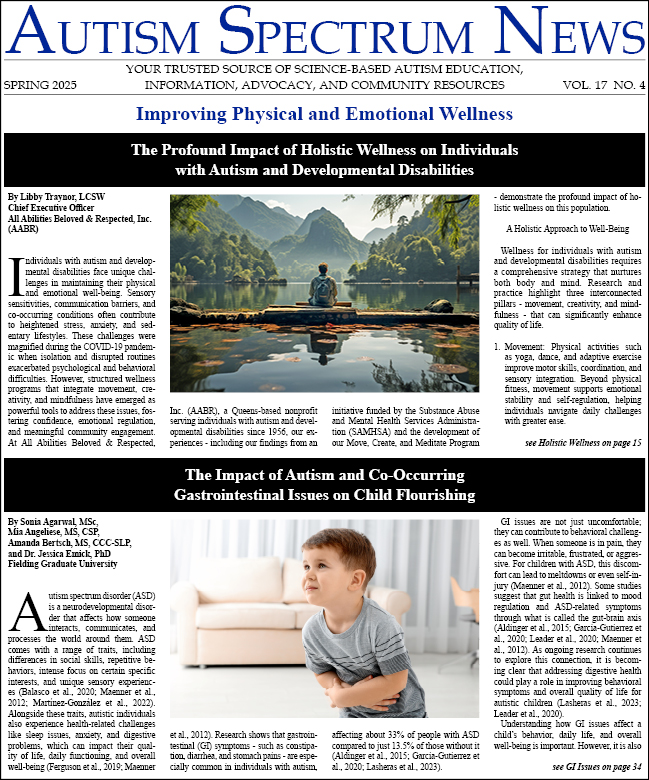-
Strengths and Challenges of Individuals with Fragile X Syndrome
Fragile X Syndrome (FXS) is an inherited genetic disorder that results in a range of characteristics which include autistic-like features, such as gaze avoidance, hand-flapping, difficulty with transitions, and impaired social and communication skills. It is the most commonly known inherited cause...
-
Understanding and Treating the Comorbid Symptoms of Autism Spectrum Disorders and Attention Deficit/Hyperactivity Disorder
As with many childhood neuropsychiatric and emotional disorders, symptoms often overlap causing assessment, diagnostic and treatment planning difficulties. With children on the autistic spectrum, it is crucial to have a thorough evaluation process and multiple treatment options to avoid the...
-
Psychiatric Disorders Associated with Autism Spectrum Disorders
Co-existing psychiatric disorders in individuals on the autism spectrum are common. Based on clinical and community studies, there is strong evidence that up to 70 percent of people with autism meet diagnostic criteria for at least one emotional or behavioral disorder. The presence of these...
-
Autism and Epilepsy – What We Know, What We Don’t Know, and How We Are Creating Awareness
People with Autism Spectrum Disorders (ASD) have a shorter life expectancy than the general population mostly because of various co-morbid medical conditions that affect their health. We do not know why but young people, those with severe intellectual disabilities, and females are at greater risk....
-
Distinguishing Stereotypy from Obsessive-Compulsive Behavior: Differential Diagnosis in Persons with Autism Spectrum Disorders
Individuals with autism exhibit a wide variety of repetitive and ritualistic behaviors. Such patterns of behavior are a defining characteristic of autism spectrum disorders, and are generally expected as part of the behavioral profile of individuals with autism. While often conceptualized as...
-
Cognitive Behavioral Therapy for Co-Occurring Mental Health Issues in ASDs
We are frequently reminded that often we do not in fact treat “autism,” but rather the co-occurring mental health and behavioral issues associated with ASDs. Youth and adults with ASDs have social and emotional difficulties which, if not addressed as part of a comprehensive intervention...
-
Importance of Motor Dysfunction in Autism Spectrum Disorders
Experienced clinicians often get their first diagnostic impression from observing their young patients’ initial social response, but also from looking at their odd posture or movements as they walk into the office. In his original paper, Kanner noticed several atypical aspects of his patients’...




